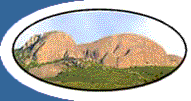Birders reassured about plans
2005-09-29
POLLUTION of the Berg River, associated with the enormous population influx in recent years, has put serious pressure on both the Paarl and Wellington Waste Water Treatment Works.
Dawid Malan, Municipal Engineer for the Drakenstein Municipality, recently briefed the Paarl Bird Sanctuary Advisory Committee on detailed plans now being considered to upgrade the installations at both Paarl and Wellington.
He said these were unlikely to affect the nesting sites and bird species now visiting the sanctuary, but would help the Municipality to cope with the additional demands on its hard-pressed waste water disposal facilities.
He assured the committee that at no time would the sanctuary have to be closed to the public.
As a first step, a new pipeline will be installed from Newtown, Wellington, to the west of the main railway line, to convey waste water to the Paarl treatment works.
These need to be upgraded to meet the demands of the rapidly expanding housing developments between Paarl and Wellington.
Following this, the remodelling of the Wellington waste water disposal plant will have to be considered.
The Wellington plant is not subject to flooding, whereas the outflow of the present Paarl disposal facility is closed during periods of exceptionally high flows in the Berg River.
At some future date, the lower three ponds of the Wellington works will be lined with clay and brought back into commission.
These ponds were drained as they had become heavily polluted and were discharging unacceptable levels of untreated water into the Berg River.
The presence of squatter camps in the area is causing great concern to riparian export fruit farmers.
The Municipality is also considering the construction of waste water treatment facilities to the south of Paarl in the Simondium area to serve the growing needs of the burgeoning development in that area.
Meanwhile, the Paarl Bird Sanctuary under the supervision of Cedric Morkel, has upgraded its bird hides, particularly the popular one facing the Sand Island.
At the request of the many photographers who are keen visitors to the sanctuary, openings in the hides have been enlarged to enable them to use even the largest of cameras and photographic equipment.
Ringing continues on a monthly basis and young birds at the heronry are ringed by Doug Harebottle of the ADU at the University of Cape Town.
A recent sighting of a Yellow-billed Egret (68) at Bot River, wearing a distinctive yellow Paarl ring, delighted birders and ringers alike.
Monthly counts for the Co-ordinated Water Bird Africa Count (CWAC) are still running after eleven years, with some of the original monitors still enthusiastically doing their bit towards this important survey.
The water bird breeding records are processed by Harebottle as part of an on-going research project.
The sanctuary remains open to visitors seven days a week. Entry is free of charge, but a register is kept of visitors. The excellent road network provides easy access to all four hides.
More
News
|


